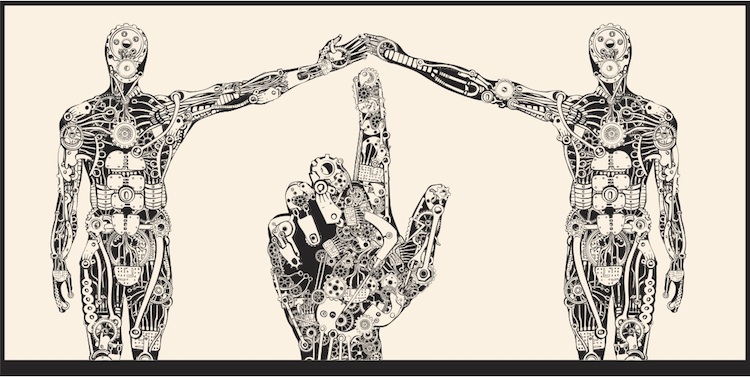Connecting Content in the Internet of Things

It’s official: the Internet of Things is upon us, thanks to the expanding and thickening web of wireless networks, the falling price of devices and sensors, and our tendency to “bring your own thing”—to work, to school, and everywhere else. It even has its own, big-budget conference.
But what exactly is the Internet of Things, and why should we care about it? As a recent post on Gigaom explains, the Internet of Things isn’t really about things. It’s actually about cheap data. In this conception, it’s about how real-time access to information changes the way stores stock their shelves and the way people heat their homes or exercise their bodies.
While this is certainly exciting in and of itself, it may only represent the tip of the iceberg. What if the Internet of Things can get beyond connecting our devices with data and start connecting us to knowledge that matters? At this point, it may really change how we live our lives.
The weighty example
Take a typical example from the Internet of Things: let’s say you have a bathroom scale that measures your weight each morning and then shares that data with your insurance company. The upshot: a very carefully calibrated insurance premium, and perhaps a text message that tells you to skip dessert. This is all very nice, but if this is this all we get from 26 billion devices that will be humming on the Internet of Things by 2020 (according to Gartner), I’ll be disappointed.
From data to knowledge to structured content
The data streaming from device to data center and back again is a pretty meaningless stack of numbers, until it is analyzed and interpreted. Internet-connected things can crunch numbers, run analyses, and spit out scenarios. But to synthesize results, to ask brand new questions, and to take full advantage cheap, abundant data, we the people using the devices need knowledge. Knowledge gives us context. It is born from organized thought and experience, and it is something very human.
There is a lot of knowledge out there. We can search it in a fraction of a second, but it’s still hard to find exactly what we need. That’s why we at Inkling are such big fans of structured content–knowledge that is broken down into meaningful chunks that are consistently organized.
Structured content makes it possible for cheap, device-driven data to act as filters that sift through knowledge, leaving only the subset that is relevant to the situation. Think of it as just-in-time knowledge.
Connected content
Let’s think about another healthcare example, this time in the connected future. Instead of an internet-connected bathroom scale, let’s consider an array of connected sensors in a remote field hospital: heart rate, blood-oxygen level, white blood cell count, etc. Toss in a bit of patient medical history and some epidemiological info about disease prevalence in the region. Combine it with the knowledge contained within, oh, 850 medical reference and textbooks. Now we’re getting somewhere: relevant, just-in-time knowledge that enables a well-informed diagnosis. In this version of the Internet of Things, we don’t just have connected devices—we also have connected content.
Knowledge and the Internet of Things
The Internet of Things isn’t about things. It doesn’t have to be about piles of cheap data, either. It could be about sharing knowledge—just-in-time, in context, and at everyone’s fingertips. Think about how readily available, relevant knowledge could change how we learn and how we make important decisions, on the job and on the fly. Where do you think connected content can take us?
Learn more about how authoring structured content on Inkling’s platform will set you and your business up for the future of connected content here.
